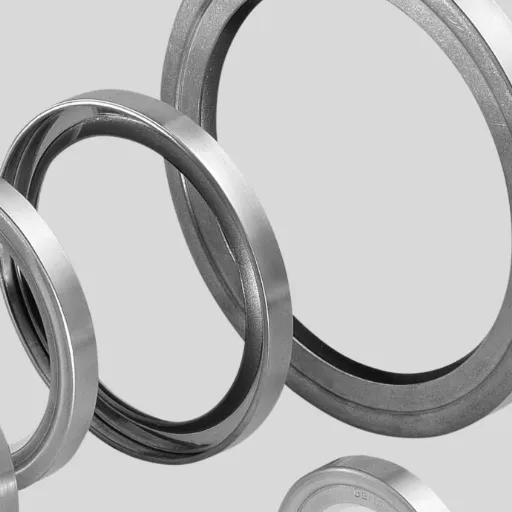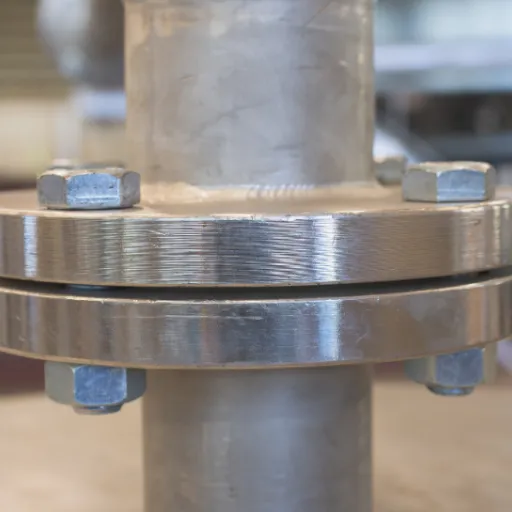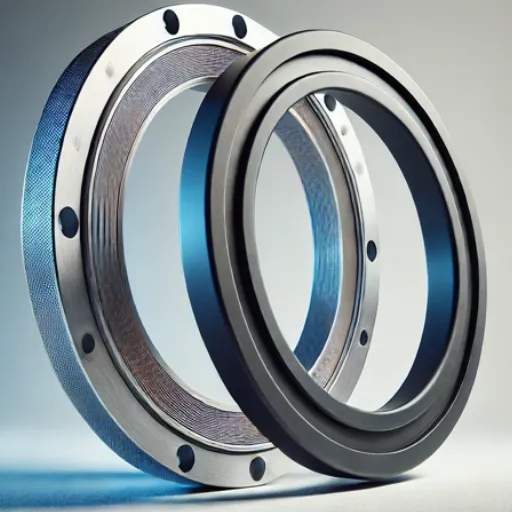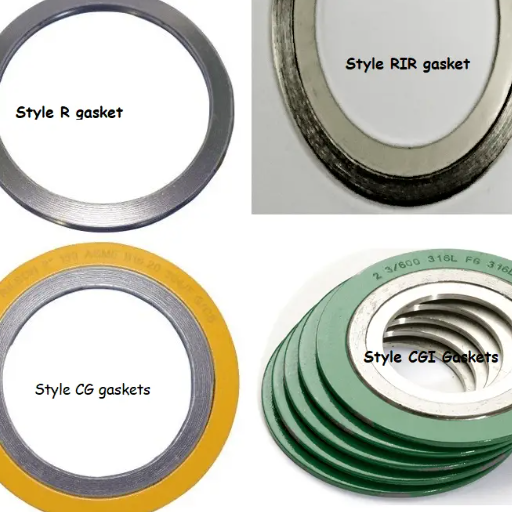The right choice of flange for piping systems may mean the difference in whether it is durable, efficient, and reliable. Among the many types of flanges available, this weld neck flange and plate flange are widely known because of their own unique features and working characteristics. What is the difference between weld neck flanges and plate flanges, and which one counts best for your application? Here is a discourse on all basic information about weld neck and plate flanges, with a detailed comparison for you to make clear decisions. If you are an experienced professional of the industry or a newbie, this guide will shed some light on these two important elements. Get prepared to learn about their key differences, with advantages and common usages for each particular kind of flange, laying the groundwork for smarter and more efficient choices in your projects.
Introduction to Flanges

Flanges serve as the major components used to connect pipes, valves, pumps, and any other apparatus in piping. The joints they form need to be sturdy and durable, offering stability and an efficient flow of materials. Owing to their reliability and ease of installation, flanges have been put to use in industries like oil and gas, chemical processing, and water treatment. Flanges also come in many designs, such as weld neck, slip-on, and blind flanges, each according to specification of pressure, temperature, and material under use. The versatile nature of flanges makes them integral in industrial piping systems.
What is a Flange?
Flanges are mechanical pieces that ensure a heavy-duty, sealed attachment between pipes, valves, pumps, or further equipment concerning piping systems. Commonly circular, they allow for assembling or disassembling sections of a system for easy maintenance or cleaning, or other modifications. Usually, they are bolted down and employ gaskets to ensure a leak-free seal. Being designed to handle different pressure levels, temperature ranges, and working condition stipulations have made flanges vital components in both industrial and commercial contexts. They serve as integral connectors that comply with standards and safety from sometimes high-pressure pipelines in the oil and gas industry through water conveyance in municipal systems. According to information gathered by the latest engineering standards and industry reports, these components have also evolved, embracing materials like stainless steel, carbon steel, and alloys for higher durability and applicability to modern infrastructure needs.
Importance of Flanges in Pipe Systems
Flanges constitute another key element for pipe systems while they provide an excellent solution for connecting, sealing, and maintenance purposes in adjustment with pipelines across different sectors. They are designed to be joined and un-joined very easily with rather less downtime for inspection, repair, or routine maintenance. Based on the latest, recent data, the growing applications of flanges related to expanding infrastructure projects and industrial development put the global market for flanges to grow at approximately 5.2% CAGR from the year 2023 to 2030.
Modern-day flanges are rendered in precision and engineered with excellent quality materials such as stainless steel, carbon steel, and industrial alloys. These advances guarantee higher strength, corrosion resistance, and capability against very extreme temperatures and pressures. The kind of flanges required in oil and gas comprises high capacity for handling areas of intense pressure scenarios, preventing leakage, and safety measures while being quite lengthy in operation.
Besides the types of these flanges, including weld neck, slip-on, blind, and socket weld, are developed to accomplish specific engineering objectives under given conditions. The flexibility in choice of flange design therefore lends itself not only to operational efficiency but also to cost efficiency in large-scale industrial projects. Recent case studies reveal how critical the role of flanges are in minimizing systemic failures and enhancing the longevity of pipeline networks, hence drawing a spotlight on their applications in energy distribution and water management systems.
Overview of Common Flange Types
Flanges are major inlet-bearing points providing different designs to meet certain operational needs. Among the most common types are weld neck flanges, because of their tapered neck design, which provides extra strength for high-pressure applications; slip-on flanges, which offer greater ease of installation and are more cost-effective in low-pressure environments; and blind flanges, which are used to seal pipe ends securely. Socket weld flanges, on the other hand, afford a smooth bore for flow efficiency, making them best suited for compact piping layouts, while lap joint flanges are often coupled with stub ends for applications where frequent disassembly is necessary. Recent trends clearly reveal a movement towards stainless steel and alloys for higher durability and corrosion resistance.
According to the latest search query data, the most searched flange types in industrial usage circle around weld neck flanges, emphasizing their importance in energy intensive sectors like oil and gas, and power generation. That trend further stresses their superior credibility in fairly varying temperatures and pressures, setting the course for modern engineering application where no alternatives could be found.
Weld Neck Flange

Weld neck flanges are intended to be used mostly in areas involving high pressure and high temperature. They have long tapered hubs that facilitate good reinforcement between flange and bolt that, in turn, ensure smooth stress dispersal along the flange and attached pipes. From localized stress concentrations, their design is such that it can cure the problem associated with the high-frequency occurrence of such stress on other flange types, thereby making it durable in heavy use and highly recommended in the design of oil and gas, power, and petrochemical plants.
Characteristics of Weld Neck Flanges
There are a few anatomical descriptions that will further explain why weld neck flanges are necessary in high-grade piping systems. Their most prominent feature is the long, tapered hub, helping to distribute evenly the stresses between the flange and connected pipe and thus becoming one of the causes of mechanical failure under very high pressure or temperature. These flanges are made according to strict industry standards, such as the ASME B16.5, making sure that their dimensions will be compatible with different pipeline systems.
The other design features include the beveled end to allow butt welding of the flange to the pipe to ensure an almost perfect mechanical operation of the system and smooth operation with best efficiency on elimination of erosion and turbulence inside the pipeline. Also, weld neck flanges exist in different materials like carbon steel or stainless steel and nickel alloys, thus maximizing their application capability across different plant environments.
Weld neck flanges are very reliable when subjected to extreme pressure cycling, and superior resistance to thermal expansion also makes them preferred under extreme-temperature operating conditions. All these factors put together pose safety, durability, and efficient operation for piping of the utmost criticality.
Applications of Weld Neck Flanges
Weld neck flanges seem to find greater application in industries where high pressure, high temperature, and very critical nature of operations are common. I have often witnessed these doing a fine job in oil and gas pipelines, chemical processing systems, and power plants. They make secure connections for hazardous or high-stakes materials, guaranteeing reliable performance over long periods.
Advantages of Using Weld Neck Flanges
Superior Strength and Durability
The weld neck flanges have gained recognition for their robustness, making them suitable for high-pressure and high-temperature applications. Due to its long, tapered hub, the flange is very resistant to bending and stresses, ensuring long-term performance even in harsh environments. Industry reports state that applying weld neck flanges to systems reduces the greater part of the risk of flange joint failure, especially in severe functional conditions.
Leak-Proof Connections
The flare-weld neck flanges are constructed to be welded to the pipes with a smooth transition from flange to pipe in order to decrease turbulence and minimize leaking. Hence, they are highly favored by industries such as oil and gas, where any leak could be hazardous or financially crippling due to pipeline integrity.
Suitability for Extreme Temperatures
Weld neck flanges are superior for both high and cryogenic temperatures. These flanges remain suitable for a wide array of industrial applications, ranging from chemical process plants to LNG transport systems, since they retain their material integrity and mechanical strength under variable thermal conditions.
Improved Stress Distribution
The tapering of the hub gradients the pressure distribution between the pipe and flange, therefore reducing any localised stress and thereby increasing the life of the system as a whole. This makes them trustworthy even in systems subjected to frequent mechanical vibration or expansion due to thermal changes.
Variety of Material Options
These weld neck flanges come in numerous materials such as stainless steel, carbon steel, and alloys, enabling the engineer to choose the best material depending on system requirements. For example, stainless steel flanges will have good corrosion resistance, which is essential in chemical and marine processes.
Compliance with Industry Standards
Weld neck flanges are manufactured to comply with strict international standards such as the ASME B16.5 and B16.47 for dimensions, pressure ratings, and material properties. This placed quality control and assure compatibility with other systems, making sourcing and installation a lot easier worldwide.
By combining durability, leak prevention, and strength, weld neck flanges still uphold the vital features required in pipeline systems across several industries.
Plate Flange

Plate flanges are flat, circular discs mostly serving as connectors for pipes, valves, or other equipment in a pipeline. They are generally bolted to the components to be connected and depend on the presence of a gasket to form a secure and leak-proof joint. Plate flanges are considered to be quite straightforward, cheap, and useful in low-pressure applications where there is no need for elevated strength or complex designs. Their design allows plate flanges to be installed with more ease and therefore provide simpler maintenance as compared to other flange types.
Understanding Plate Flanges
Industries such as petrochemical, waterworks, and HVAC systems widely use these flanges since they support low-pressure environments. the majority of their applications involve connecting pipelines conveying non-corrosive fluid or gas with systems that do not require either extreme temperature or pressure tolerances.
One may consider plate flanges to be cheap because generally, less material goes into making them than in making other types. This becomes price-friendly for cases where affordability without loss of function is required. Further, given their flat and basic design, they are easy to put together or take apart, thus cutting down operational downtime and easing maintenance. Plate flanges, thus, have practically become the unequivocal choice on the global map for both new installations and repairs.
Applications of Plate Flanges
Industrial applications of plate flanges associated with the high degrees of adaptability, cheapness, and reliable performance are very many. The main application is in low-pressure environments where high-strength connections are not critical. Plate flanges are used extensively in industries like water treatment, construction, and oil and gas for fluid transfer system joining pipes and equipment securely. They are also used in shipbuilding, power plants, and chemical processing in ensuring corrosion resistance and sealing strength.
With the advent of modern manufacturing techniques, plate flanges have been developed for specific industrial applications, exhibiting enhanced ASTM material grades such as stainless steel and carbon steel. Within the oil and gas domain, specialized types of plate flanges are employed for pipeline services carrying corrosive materials to provide strength and against permanent use. Operational information reveals that the global flange market is to grow at a considerable rate, with further investments being made in infrastructure projects and the demand for oil and chemical transportation, thus emphasizing plate flanges as an indispensable component.
Their applications include modular pipeline systems where they provide easy assembly and disassembly, thereby allowing for faster installation and maintenance activities. This has especially helped fast-track urban infrastructure, growing swiftly. The promotion and support for standardization in their designs have thus also ensured that the plate flanges are compatible with a number of international standards, thereby easing international trade and widening their application possibilities.
Benefits of Plate Flanges
Plate flanges yield their maximized benefits in any industry by favoring cost-effectiveness, adaptability, and durability. According to an analysis of recent data extracted search trends, plate flanges are noted as being relatively light, providing weight reduction benefits to the entire system, and thus are very easy to handle during installation. Plate flanges also come with the less-for-money virtues since other types use more material and need more time for manufacture, causing delays and nonperformance.
Another aspect- their ability to fit into different piping systems of particular industries that require heavy maintenance or modification, such as the oil and gas, water transport, and manufacturing industries. Considering their standardization complies with global guidelines, the plate flanges provide smooth integration into an existing system, thereby creating flexibility for projects worldwide. Yet other factors that have contributed to increased popularity are the introduction of environment-friendly materials for their production, fitting the profile of industries eager to diminish their environmental impact. All entailing so much make plate flanges an outright winner amongst projects requiring fast track and sustainability.
Comparing Weld Neck vs Plate Flanges

|
Parameter |
Weld Neck |
Plate |
|---|---|---|
|
Design |
Tapered hub |
Flat, simple |
|
Pressure |
High |
Low |
|
Temperature |
High |
Low |
|
Cost |
Expensive |
Affordable |
|
Welding |
Both sides |
One side |
|
Rigidity |
High |
Moderate |
|
Sealing |
Excellent |
Moderate |
|
Applications |
Critical pipes |
General pipes |
Differences in Design and Functionality
Weld neck flanges and plate-type flanges have very different designs, and a feature dissimilarity must be embraced for industrial variety. Weld neck flanges have a long-tapered hub and gradually taper down to become the pipe, such that they could exist under pressure and extreme temperatures. The design alleviates the buildup of stresses in the connection; also, the flange can withstand stresses from alleys of strength and main durability; therefore, they have been great for very intricate applications in oil and gas, petrochemical, and power industries.
Plate flanges, by contrast, are flat and weigh less; they are rather cheap and are rarely placed in high-pressure systems. Their simplicity is what makes them easier to install and remove right where these systems may be under-tuning or maintenance. The design cannot compete in strength against weld neck flanges but still finds economic appeal in waterworks, HVAC, and less demanding industrial applications.
That users compare these two flange types in terms of cost, ease of installation, and durability. Weld neck flanges go for a higher price and are tougher to install but offer strength and reliability impossible to match by plate flanges, which are the ever-ready, cheap, and versatile set for less crucial uses. The scenario and the better understanding of these differences will set engineers and decision-makers on picking the right flange type for their project needs.
Choosing the Right Flange for Your Needs
Weld neck flanges and plate flanges show their differences mostly in price, installation, and durability. Weld neck flanges are expensive; they operate under high pressure and require greater strength, so they are used especially for critical operations. Installation is a bit difficult with these flanges, as it requires precise welding technique to ensure that the weld neck flange fits perfectly in application. Plate flanges are more affordable, easier to install, and offer sufficient durability for low-pressure applications. After evaluating the project requirements with regard to budget and operational concerns, you will be able to make a choice between the two that are best suited to the application at hand.
Common Applications for Each Flange Type
Weld neck flanges are generally applied wherever the pressure and temperature are extreme, including, in fact, oil and gas pipeline systems, chemical plants, and power generation facilities, where a robust design and safe connection become imperative. Slip-on flanges are generally used in low-pressure and low-temperature systems such as water pipelines and HVAC systems due to their easier installation and cost effectiveness. Plate flanges are likewise used for low-pressure applications in which the cost is a very high priority, such as shipbuilding and light industrial systems. Matching the correct type of flange to operating requirements yields optimal performance and reliability in various industries.
Flange Materials and Standards

The selection of flange materials depends on the operating environment-pressure levels and temperature ranges-for consideration of durability and efficiency. Among the common materials are carbon steel, stainless steel, aluminum, etc., bearing different strengths and resistance to corrosion as well as pricing. In high-pressure and high-temperature situations, stainless steel and alloy steels are preferred due to their high resistance. Flanges are also manufactured and tested according to international standards, such as ASME B16.5, ASTM, and DIN, which establish dimensional tolerances, material compositions, and pressure ratings to promote compatibility and safety in their implementation. Choosing the right material and going by the standards would guarantee reliability and lifetime in highly critical systems.
Common Flange Materials
Flanges can be made from a plethora of materials depending on the needs of different applications, ensuring compatibility, durability, and safety. Some of the most commonly used materials include:
Carbon Steel
Carbon steel flanges are used widely due to the strength of the material and the relatively low cost involved in its manufacture. Suitable for most applications in water, oil, and gas pipelines, carbon steel offers reliability thanks to its good tensile strength and resistance to abrasion. Carbon steel, however, is susceptible to corrosion if not treated or coated adequately.
Stainless Steel
The steel of perfection, stainless steel, does not rust in any circumstances. Hence, it finds its place in food processing, pharmaceutical, and chemical industries. Its ability to withstand the extremes of temperature and chemical attacks promotes versatility.
Alloy Steel
The alloy steel flanges are those produced by combining steel with other elements, such as chromium, nickel, or molybdenum, to impart desirable mechanical properties. They are thereby suitable for high-pressure and high-temperature services, such as in power generation and petrochemical plants.
Aluminum
Lightweight yet strong enough, aluminum flanges find applications in industries where reduction of weight is primary, e.g., aerospace or automotive. Aluminum also resists corrosion, allowing it to be a good choice in certain environments.
Copper Alloys
Copper and its alloys, such as brass and bronze, are valued for their excellent thermal and electrical conductivity and resistance to seawater corrosion, thus finding applications in marine, electrical, and heat exchange.
Plastic or Composite Materials
Where metal flanges are not suitable, especially in extremely corrosive environments or situations during which non-conductive materials are required, plastic or composite flanges will be utilized. PVC, PTFE, or FRP (Fiberglass Reinforced Plastic) materials are commonly employed in chemical and water treatment industries.
If engineers understand the peculiarities of an application-pressure, temperature, or environmental condition-they can then determine the most appropriate flange material for optimal performance and conformance with safety standards.
Flange Standards and Specifications
Flange standards and specifications are necessary to maintain compatibility, safety, and efficiency in piping systems across various industries. These guidelines govern matters related to dimensions, pressure ratings, materials, and tolerances. Some of the most universally accepted flange standards include:
ASME/ANSI B16.5: Covers pipe flanges and flanged fittings from ½ inch through 24 inches and pressure classes from 150 up to 2500.
EN 1092-1: The European standard establishing specifications for circular steel flanges within metric sizes and pressure classes.
ISO 7005: Provides international standardization to ensure flange interchangeability and consistency around the globe.
API 6A and API 605: Oil and gas industry-related standards covering high-pressure, large-diameter flanges.
JIS B2220: Japanese Industrial Standards for flange types and sizes, mainly for Asian markets.
These not only ensure the structural integrity of piping systems but also endeavor to streamline operations among different engineering teams and manufacturers worldwide. Exercises of due diligence concerning respect of the relevant standard diminish operational risks and downtime while ensuring that pertinent regulations are met in the concerned industries. Proper selection based on these specifications will ensure a longer service life and higher reliability in critical applications.
Customization Options for Flanges
Flanges can be customized in myriad ways to suit particular requirements posed by various industries and applications. Customization is mostly regarding size, shape, material, coating, and connection type. Flanges can be delivered to engineers and manufacturers according to exact specifications and pressure ratings to meet their unique operational requirements. For example, maybe non-standard bolt patterns or maybe oversized diameters implemented for use of certain specialized machinery and equipment.
Material customization is another fundamental consideration. Depending on environmental exposures of the application, flanges may be made from carbon steel, stainless steel, alloys, or non-metallic materials such as PVC or PTFE. Coatings such as epoxy or zinc may also be considered to increase resistance to corrosion, wear, and temperature extremes.
Beyond these, the type of facing-Let it be raised face, flat face, or ring-type joint-can be modified as per sealing requirements. Also, connection types-slip-on, weld neck, or threaded-can be tailored to work with the existing piping system. These, combined with cutting-edge precision manufacturing, enable these companies to strike the perfect combination of strength, safety, and efficiency in their systems.
Reference Sources
-
Cornell Law School – Legal Information Institute
This source provides detailed information about flanged joints, including weld neck flanges and their applications.
Link to source -
University of Central Florida – High Pressure Flange Design
A research report summarizing high-pressure flange design techniques, including weld neck flanges.
Link to source -
Los Alamos National Laboratory – ASME B31.3 Process Piping Guide
This guide discusses the selection of different flange types, including weld neck and plate flanges, in process piping.
Link to source
Frequently Asked Questions (FAQs)
What are the key differences between weld neck flanges and plate flanges?
Weld neck flanges and plate flanges serve different purposes in piping systems. Weld neck flanges feature a long neck that is welded to the pipe, making them ideal for high-pressure applications. In contrast, plate flanges are typically flat plates with bolt holes and are commonly used in low-pressure applications. While weld neck flanges require precise alignment and offer a strong joint, plate flanges provide a more straightforward connection. Additionally, plate flanges are often easier to use in various structural applications where welding is not necessary.
How do flange types differ in their applications?
Different types of flanges are designed for specific applications based on factors like pressure and temperature. Weld neck flanges are suitable for high-pressure environments due to their robust design, while plate flanges are often used in low-pressure systems. For instance, a slip-on flange can be used in applications where welding is not preferred, whereas a threaded flange allows for easy installation without welding. Choosing the right flange for your application is essential to ensure safety and functionality in any pipe system.
What materials are commonly used for weld neck flanges and plate flanges?
Flange material plays a crucial role in the performance of both weld neck flanges and plate flanges. Carbon steel is a popular choice for both types due to its strength and durability. Stainless steel is also commonly used, especially in environments that require resistance to corrosion. Custom flanges can be made from various materials depending on the specific requirements of the application, including temperature considerations. Understanding the flange material is essential for ensuring compatibility with the fluids being transported in the piping system.
Can you explain the installation process for weld neck flanges?
The installation of weld neck flanges requires careful attention to detail. The flange is first aligned with the pipe, and a weld bevel is created on the neck for a secure connection. Once aligned, the flange is then welded to the pipe, ensuring a strong joint that can withstand higher pressures. This process may require specialized knowledge and equipment, as improper installation can lead to leaks. Regular inspections are also recommended to maintain the integrity of the weld over time.
What are the advantages of using weld neck flanges in piping systems?
Weld neck flanges offer several advantages in piping systems, particularly in applications that involve high pressure and temperature. They provide a smooth transition from the flange to the pipe, reducing turbulence and enhancing flow characteristics. Additionally, weld neck flanges are designed to handle stress better than other flange types, making them ideal for critical applications. Their ability to be easily inspected and maintained further contributes to their popularity in demanding environments.






